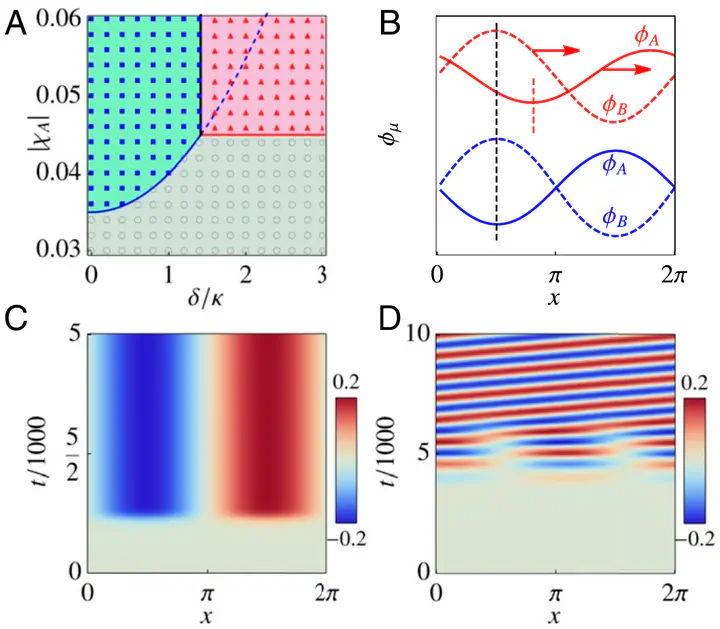
Abstract:
We examine a nonreciprocally coupled dynamical model of a mixture of two diffusing species. We demonstrate that nonreciprocity, which is encoded in the model via antagonistic cross-diffusivities, provides a generic mechanism for the emergence of traveling patterns in purely diffusive systems with conservative dynamics. In the absence of nonreciprocity, the binary fluid mixture undergoes a phase transition from a homogeneous mixed state to a demixed state with spatially separated regions rich in one of the two components. Above a critical value of the parameter tuning nonreciprocity, the static demixed pattern acquires a finite velocity, resulting in a state that breaks both spatial and time-reversal symmetry, as well as the reflection parity of the static pattern. We elucidate the generic nature of the transition to traveling patterns using a minimal model that can be studied analytically. Our work has direct relevance to nonequilibrium assembly in mixtures of chemically interacting colloids that are known to exhibit nonreciprocal effective interactions, as well as to mixtures of active and passive agents where traveling states of the type predicted here have been observed in simulations. It also provides insight on transitions to traveling and oscillatory states seen in a broad range of nonreciprocal systems with nonconservative dynamics, from reaction–diffusion and prey–predators models to multispecies mixtures of microorganisms with antagonistic interactions.
Significance:
Effective interactions that break action–reaction symmetry are ubiquitous in systems where interactions are mediated by a nonequilibrium environment. They are also the norm in the living world. By examining the dynamics of a diffusing binary mixture, we demonstrate that antagonistic cross-diffusivities can drive the transition from static to traveling spatial patterns. In the context of an analytically tractable model, we elucidate the nature of the transition and demonstrate that the emergence of traveling or oscillating patterns is a generic consequence of nonreciprocity in multispecies systems described by scalar fields. Our work is directly relevant to the understanding and control of nonequilibrium assembly in mixtures of chemically interacting colloids.